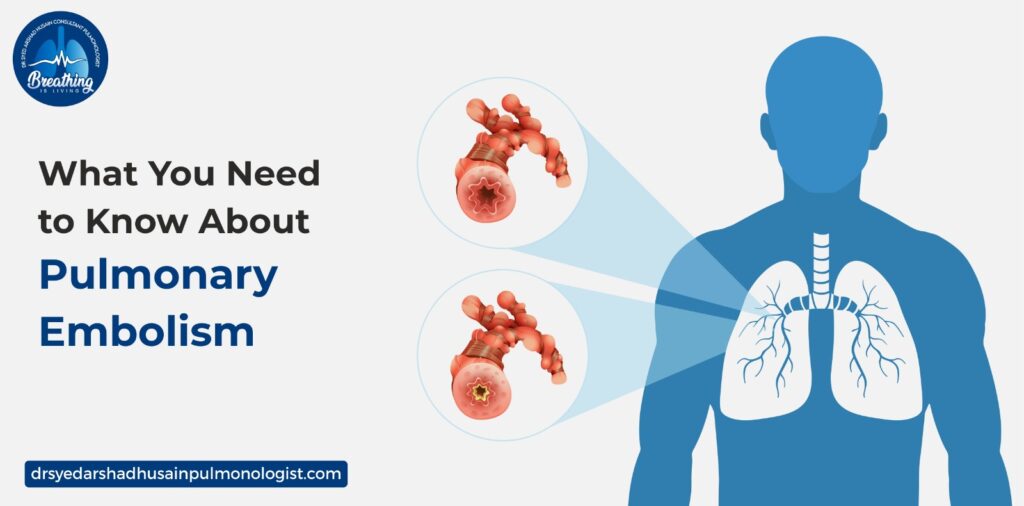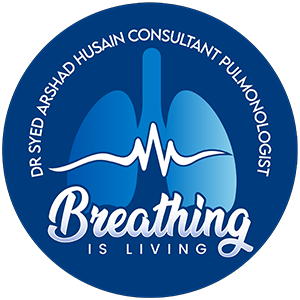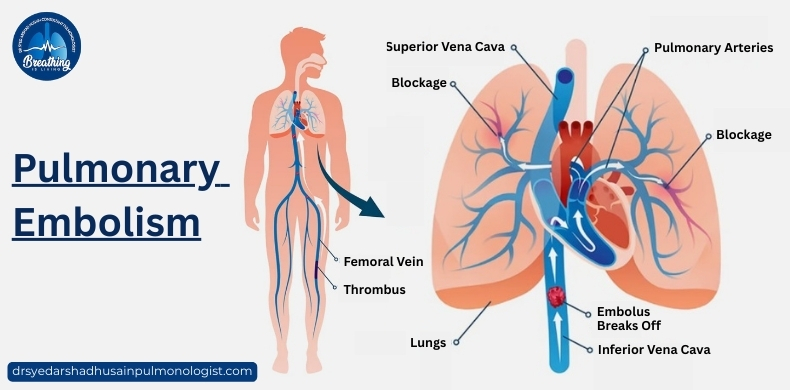The blood clot is a common problem that can occur anywhere in our body, but it becomes serious when it blocks an artery in the lungs, and this blockage is recognized as the name of pulmonary embolism. The most concerning aspect of this serious condition is the blockage, which reduces oxygen flow, damages lung tissue and can be life-threatening if not treated quickly. That’s why understanding pulmonary embolism is important to recognize the condition in its early stages, and this blog will help you get all the necessary information to prevent this disease.

What Causes Pulmonary Embolism?
Pulmonary embolism usually results from a deep vein thrombosis (DVT), where a blood clot forms in the veins, usually in the legs, and then travels to the lungs. Some major risk factors include:
- Prolonged Inactivity: Sitting for long hours during travel or bed rest increased clot risk.
- Surgery or Injury: Post-surgical patients are at higher risk due to reduced mobility.
- Blood Clotting Disorders: Certain genetic conditions can cause abnormal clotting.
- Cancer and Chemotherapy: Some cancers increase the likelihood of clot formation.
- Smoking and Obesity: Both factors contribute to poor blood circulation.
- Pregnancy and Birth Control Pills: Hormonal changes can make blood more prone to clotting.
Common Symptoms of Pulmonary Embolism
Symptoms of pulmonary embolism can vary based on the size of the clot and how much lung tissue is affected. Some common signs include:
- Sudden Shortness of Breath: A feeling of breathlessness without any clear reason.
- Chest Pain: Sharp, stabbing pain that worsens with deep breathing or coughing.
- Coughing Up Blood: May indicate lung tissue damage.
- Rapid Heart Rate: A sign that the body is struggling to get enough oxygen.
- Dizziness or Fainting: Due to low oxygen supply to the brain.
If you experience any of these symptoms, seek emergency medical attention immediately.
How is Pulmonary Embolism Diagnosed?
Doctors use several tests to diagnose PE and confirm the presence of blood clots:
- D-dimer Blood Test: Measures a protein fragment from blood clots; high levels suggest clotting issues.
- CT Pulmonary Angiography: A specialized X-ray that detects clots in lung arteries.
- Ventilation-Perfusion (V/Q) Scan: Helps assess airflow and blood flow in the lungs.
- Ultrasound of the Legs: Identifies deep vein thrombosis (DVT) as a possible source.
Related Blogs: Pulmonary Fibrosis Every Patient Should Know
Treatment Options for Pulmonary Embolism
Early and effective treatment is crucial for preventing complications. Some key treatment of pulmonary embolism options include:
1. Blood Thinners (Anticoagulants)
- Help prevent new clots and stop existing ones from growing.
- Common medications include Warfarin, Heparin, and newer Anticoagulants like Rivaroxaban.
2. Clot-Dissolving Drugs (Thrombolytics)
- Used in severe cases to break down large clots quickly.
- Involves high-risk treatment and is only given in emergencies.
3. Surgical Procedures
- Embolectomy – Surgery to remove a large clot from the lungs.
- Inferior Vena Cava (IVC) Filter – A device placed in the main vein to catch clots before they reach the lungs.
Preventing Pulmonary Embolism
Since PE is often linked to deep vein thrombosis (DVT), prevention focuses on reducing clot formation risks:
- Stay Active: Regular movement, especially during long flights or bed rest, helps circulation.
- Wear Compression Stockings: Prevents blood from pooling in the legs.
- Stay Hydrated: Drinking water reduces blood viscosity and prevents clotting.
- Quit Smoking: Improves overall circulation and reduces clot risk.
- Manage Weight & Exercise Regularly: Obesity increases clot risk, making weight control crucial.
- Take Medications as Prescribed: Those at risk may need blood thinners to prevent clots.
Related Blog: Mediastinal Lymphadenopathy: Causes, Symptoms & Treatment
Complications of Pulmonary Embolism
If left untreated, PE can lead to severe complications, such as:
- Pulmonary Hypertension: High blood pressure in lung arteries due to repeated clotting.
- Lung Damage: Permanent scarring or reduced lung function.
- Heart Strain: Increased pressure on the heart can lead to heart failure.
When to See a Doctor?
Seek immediate medical help if you experience:
- Unexplained shortness of breath
- Chest pain that worsens with breathing
- Coughing up blood
- Sudden dizziness or fainting
Final Thoughts
Pulmonary embolism is a serious but preventable condition. Knowing the risk factors, recognizing symptoms early, and following preventive measures can reduce the chances of life-threatening complications. If you have a history of blood clots or are at risk, talk to a professional pulmonologist such as Prof. Dr Syed Arshad Husain about prevention strategies and regular check-ups.


